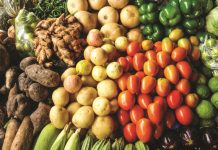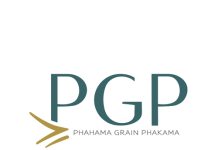Did you know that the humble sorghum grain is high in dietary fibre, assists in digestion, prevents celiac disease and allergies, is rich in antioxidant phenolic compounds – and yet is the least utilised among cereals? And while sorghum is regarded as Africa’s second most important cereal after maize, and the fifth most important grain crop globally after maize, rice, wheat and barley, it remains a marginalised crop in South Africa.
To address the challenges facing the local sorghum industry, a sorghum value chain upgrade feasibility study was commissioned by the Agricultural Bio-economy Innovation Partnership Programme (ABIPP) unit of the Department of Science and Innovation (DSI). This study was conducted by Automotive Investment Holdings. This is in line with the DSI’s drive to revitalise South African agriculture – a sector which, according to the National Development Plan, has the potential to expand by one million hectares and create one million jobs by 2030.
The research began with a situational analysis, which found that local sorghum demand had slumped over the past decade as consumption of traditional African beer declined. Compounding this was the almost total cessation of exports to Botswana, resulting from that country’s successful production of its own sorghum.
Over the same period, a precipitous decline in local production saw South Africa moving from being a net exporter to a net importer of sorghum, primarily from the United States (US). In the 2019/2020 season, however, local production showed signs of recovery, increasing by 24% year-on-year to 1 580 000 tons, with the national yield spiking 48% in the same period, from 2,51 t/ha to 3,72 t/ha.
Growth opportunities
The research team then identified a number of market opportunities for the local sorghum industry, including import replacement, growth opportunities in local food and beer production as well as a potential East African export market. On the challenges side, an analysis of likely climate change impact indicated that the production of cereals in general will be adversely affected by higher temperatures and increased frequency of extreme weather events.
Looking at the US and Australia, the study found that sorghum is less costly than maize in both these countries, and enjoys the support of quality research conducted by institutions such as the Queensland Sorghum Alliance and Texas A&M University. The status of the industry in the two countries clearly indicates that, with dedicated and adequately funded research programmes, the competitive position of sorghum in the grain commodity market can be greatly elevated and strengthened.

Sorghum market initiatives in these countries are also supported by promotion and advertising through organisations such as the United Sorghum Check-off Program in the US. This has contributed to an increase of more than 250% in the amount of sorghum consumed by people in the US over the last five years. Furthermore, this demand growth is based on consumer choice, because the grain is non-genetically modified, gluten-free and high in antioxidants. It is also an excellent source of dietary fibre, is potentially protective against type 2 diabetes and cardiovascular disease, and has favourable food crop sustainability factors for an eco-friendly environment.
Upgrading production
Based on all these findings, the research report recommends a programme to upgrade primary sorghum production in South Africa, as a key to enhancing the value chain of the local industry. The aim of the programme would be to produce sorghum at a competitive price relative to its grain counterparts, primarily white and yellow maize.
To achieve such competitive pricing, on-farm yields of sorghum would need to be increased, and/or production costs of sorghum would need to be reduced. To realise these two objectives, the report recommends the implementation of an advanced germplasm development (pre-breeding) programme, the identification of high-yielding land, and the application of new farming technologies such as precision agriculture.
It also proposes the establishment of a dedicated sorghum industry cluster to draw in the participation of all role-players in the value chain – from the seed suppliers to the retailers. This collaborative initiative would implement a market development programme, focussed on promoting sorghum in the local market while developing new export markets as well as supporting the expansion and increased inclusivity of the sorghum industry to include marginalised rural communities.
The study lastly recommends that the Eastern Cape be considered for a pilot site to demonstrate the value of establishing local processing centres to address the logistical costs and challenges faced by the producers in the Eastern Cape. The province is considered to have high potential for sorghum cultivation, especially in view of the growing negative impact of climate change on grain cultivation in some of the country’s current high-potential regions.




















